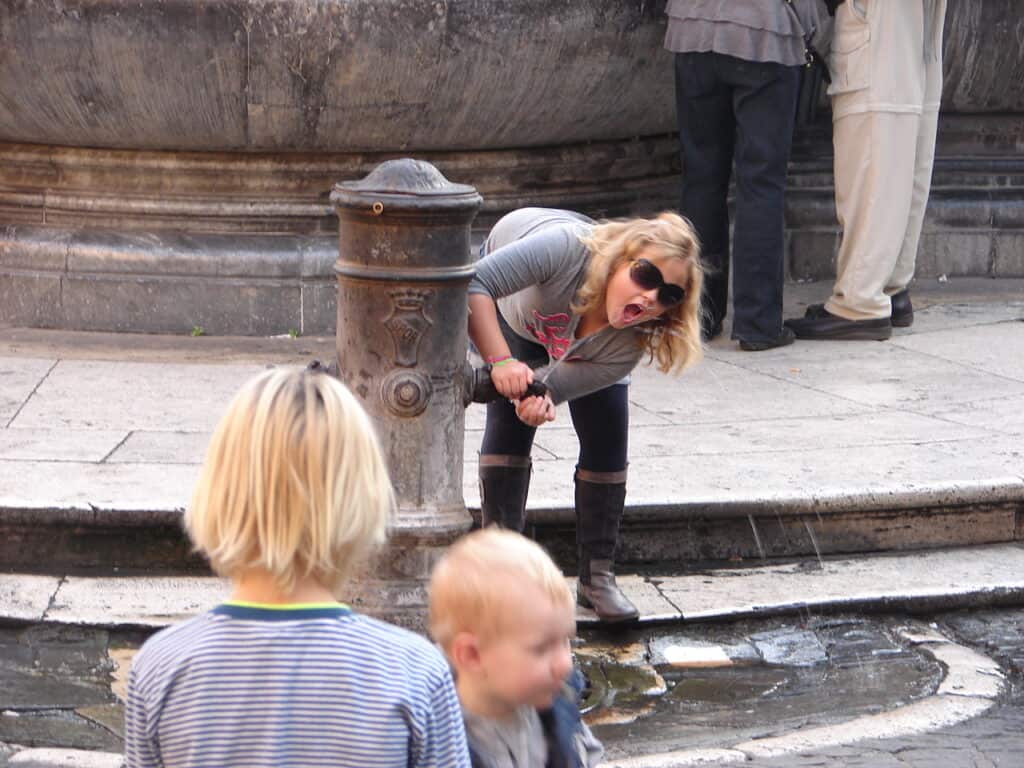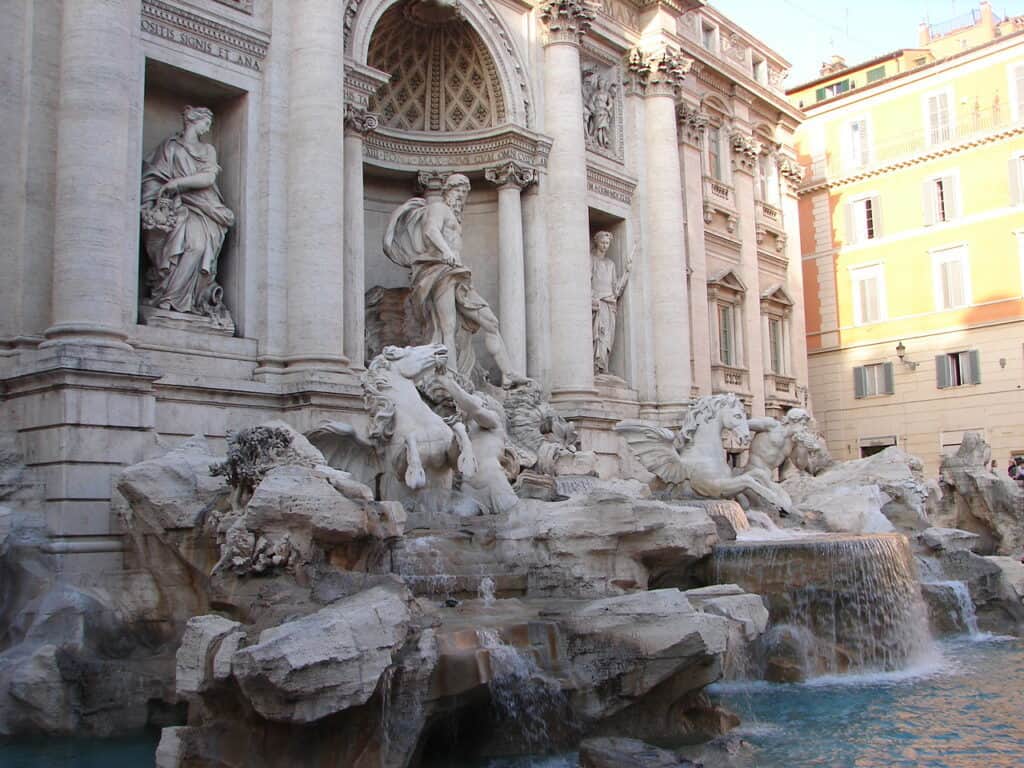Rome has thousands of quirky drinking fountains called Nasoni to keep you hydrated during the hot summer.
Nasoni origin story

In the 1870’s, shortly after unification, Rome became the capital of the new country of Italy. The local government decided it would be a good idea to supply fresh and clean drinking water to her citizens, since few homes had running water.
Thousands of water fountains called Nasone (plural: Nasoni) were constructed all around the city for this purpose. At the height of their popularity, there were over 5,000 Nasoni in Rome. Today, there are about 2,500 in the metro area with about 200 in the historical city center, providing necessary water to both citizens and tourists.
BTW, the Nasone translates to “big nose.” They got their name from the spout’s supposed resemblance to a large proboscis.
How Nasoni work
The Nasoni are fed by the mountaintop streams above the city.
The water runs continuously through the Nasoni, 24/7/365. This is to keep the water from stagnating. That might seem like a big waste of water, but Acea, the water company of Rome, says that very little is wasted because the water is often recycled for other uses like irrigation. In fact, leaky pipes in Rome’s old water system wastes exponentially more water than the Nasoni.
Because the water is always flowing, there’s not tap to turn on and off. Instead, you walk up the Nasone, put your water bottle under the faucet and fill up. Since the water comes from mountain streams, it is always fresh and cold. Acea tests the water 250,000 a year to make sure it is clean.
If you don’t have a water bottle with you, plug the faucet of the Nasone and water will squirt from a tiny hole, just like a drinking fountain. Just be sure to be ready for the stream. Water pressure can send it several inches in the air and I’ve seen unsuspecting tourists get splashed in the face!
And, if you’ve got a furry friend with you, many Nasoni have a bowl or catch basin where dogs and other pets can get a drink.
Potable vs. Non-Potable water

The water from the Nasoni in Rome is safe to drink. The same is not true for water in fountains.
Apparently, back in the day, people used the water from the Trevi Fountain to brew espresso. That’s not something you want to do today. Rome’s fountain water, including that in the Trevi, is treated with a cocktail of chemicals to keep it clear and to keep the pipes from clogging. Not safe to drink!
And, if you’re thinking of re-enacting the Anita Ekberg scene from “La Dolce Vita” where she frolicked in the Trevi Fountain; think again. It’s against the law and you could get hit with a hefty fine.
Where to find Nasoni
Nasoni are everywhere in Rome. There’s over 200 in the historic city center. Many of them are next to famous attractions like the Spanish Steps, the Coliseum, and the Pantheon. There’s even one by the Trevi Fountain, although you don’t want to drink the water that’s in the Trevi (see above).
There are some apps you can download to your phone to find a Nasone, but I like this tool from Acea, the water company in Rome. Just plug in your location for the closest Nasone.
Benefits of the Nasoni
Hopefully, I’ve convinced you of what a good idea the Nasoni of Rome are. Not only is it incredibly convenient to have clean, fresh (and free!) running water within a few steps, it can also be a lifesaver. Homeless advocates have pointed out that the Nasoni are a vital resource for people living on the street. Proponents of animal welfare make the same point.
The tourists who swarm Rome every year like the convenience, too.
And then there’s the environmental benefit. By not buying and throwing away disposable plastic water bottles, less waste is tossed in the landfill (much of which ends up in our waterways) and fossil fuels aren’t burned to transport water to stores.
When the water stops
In 2017, disaster struck. The spring rains didn’t come and that was followed by an oppressive summer heat wave. Lake and reservoir levels fell dangerously low and the local government in Rome was forced to act. Water was rationed and pressure was cut to homes and businesses. The fountains at St. Peter’s stopped running. The flow at some Nasone became a trickle.
While the last few years haven’t been as dry as 2017 and the water at Rome’s Nasoni are flowing again, Italy as a whole is grappling with a water crisis. Climate change has made rainfall unreliable. Aging infrastructure means that much of Italy’s water is lost to leaky pipes. Hopefully, these issues can be dealt with so everyone has easy access to clean drinking water.
About the Author

Brent Petersen is the Editor-in-Chief of Destination Eat Drink. He currently resides in Setubal, Portugal. Brent has written the novel “Truffle Hunt” (Eckhartz Press) and the short story collection “That Bird.” He’s also written dozens of foodie travel guides to cities around the world on Destination Eat Drink, including in-depth eating and drinking guides to Lisbon, Porto, Sintra, Monsaraz, and Evora in Portugal. Brent’s podcast, also called Destination Eat Drink, is available on all major podcasting platforms and is distributed by the Radio Misfits Podcast Network.
